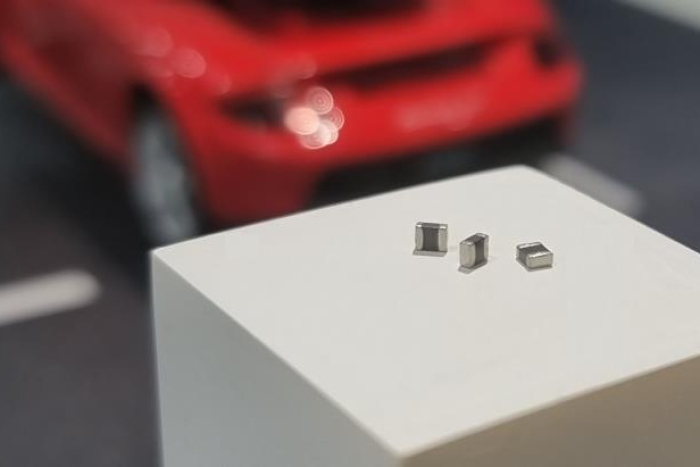Electronics
Samsung Electro-Mechanics starts mass-producing power inductors
The company's development of the part dubbed the second MLCC is geared for both EVs and self-driving cars
By Jul 17, 2023 (Gmt+09:00)
1
Min read
Most Read
LG Chem to sell water filter business to Glenwood PE for $692 million


Kyobo Life poised to buy Japan’s SBI Group-owned savings bank


KT&G eyes overseas M&A after rejecting activist fund's offer


StockX in merger talks with Naver’s online reseller Kream


Mirae Asset to be named Korea Post’s core real estate fund operator



South Korea's Samsung Electro-Mechanics has started mass-producing power inductors, an essential component of electric (EV) and self-driving vehicles, under plans to develop the part as its second multilayer ceramic capacitor (MLCC).
The company on Sunday said it launched full-scale production of the part for use in EV cameras with self-driving systems. The component ensures stable power supply to semiconductors that process autonomous driving information by preventing rapid changes in current.
With high productivity and a small size of just 2 mm wide and 1.6 mm long, the company's products come in two types: one with a capacity of 1.0 uH (microhenry) and the other 2.2 uH. Performance is determined by the raw magnetic material and number of coils (copper wire) woundable inside an inductor, thus putting more coils in the limited space is the key to improvement.
Samsung Electro-Mechanics' thin-film inductor has thin coils formed on a substrate to allow the insertion of more coils than in conventional winding types, which wind coils around a magnetic material.
Because it mainly manufactures MLCC, the company has considerable know-how in materials technology. It self-developed a magnetic material with excellent characteristics and low energy loss through its material technology and experience accumulated from MLCC operations.
Another advantage is the wide range of applications of Samsung Electro-Mechanics inductors because they meet AEC-Q200, a test standard requiring high reliability for automotive electronic parts. Its power inductors can also be used in advanced driver-assisted systems and infotainment in vehicles.
The aggressive rollout of EVs and self-driving cars on the automotive market has prompted growth of related markets. The power inductor sector is seen to grow an average 9% per year to $3.6 billion in 2028, but that for inductors used in electronic vehicle equipment is forecast to grow faster at 12%.
Write to Ye-Rin Choi at rambutan@hankyung.com
More to Read
-
 Electric vehiclesSamsung Electro-Mechanics unveils high-capacity MLCCs for EVs
Electric vehiclesSamsung Electro-Mechanics unveils high-capacity MLCCs for EVsMay 16, 2023 (Gmt+09:00)
2 Min read -
 ElectronicsSamsung Electro-Mechanics releases 200-megapixel camera module
ElectronicsSamsung Electro-Mechanics releases 200-megapixel camera moduleMar 20, 2023 (Gmt+09:00)
1 Min read -
 Korean chipmakersSamsung Electro-Mechanics unveils chip substrate for autonomous driving
Korean chipmakersSamsung Electro-Mechanics unveils chip substrate for autonomous drivingFeb 27, 2023 (Gmt+09:00)
2 Min read -
 Corporate strategySamsung Electro-Mechanics to focus on IT, automotive electronics sectors
Corporate strategySamsung Electro-Mechanics to focus on IT, automotive electronics sectorsMar 10, 2022 (Gmt+09:00)
1 Min read -
 AutomobilesSamsung Electro-Mechanics aims to take lead in MLCC market
AutomobilesSamsung Electro-Mechanics aims to take lead in MLCC marketAug 13, 2021 (Gmt+09:00)
1 Min read -

Comment 0
LOG IN


